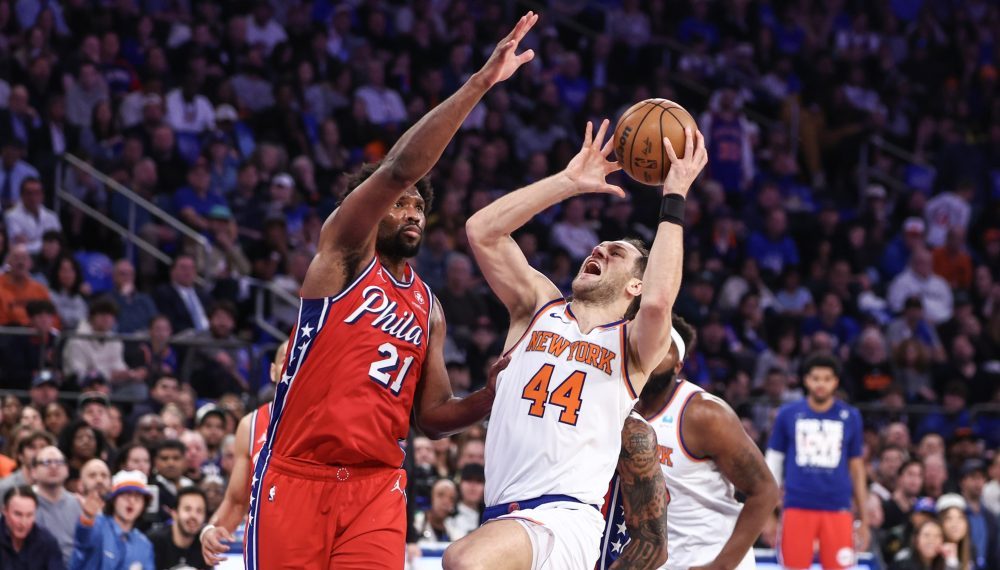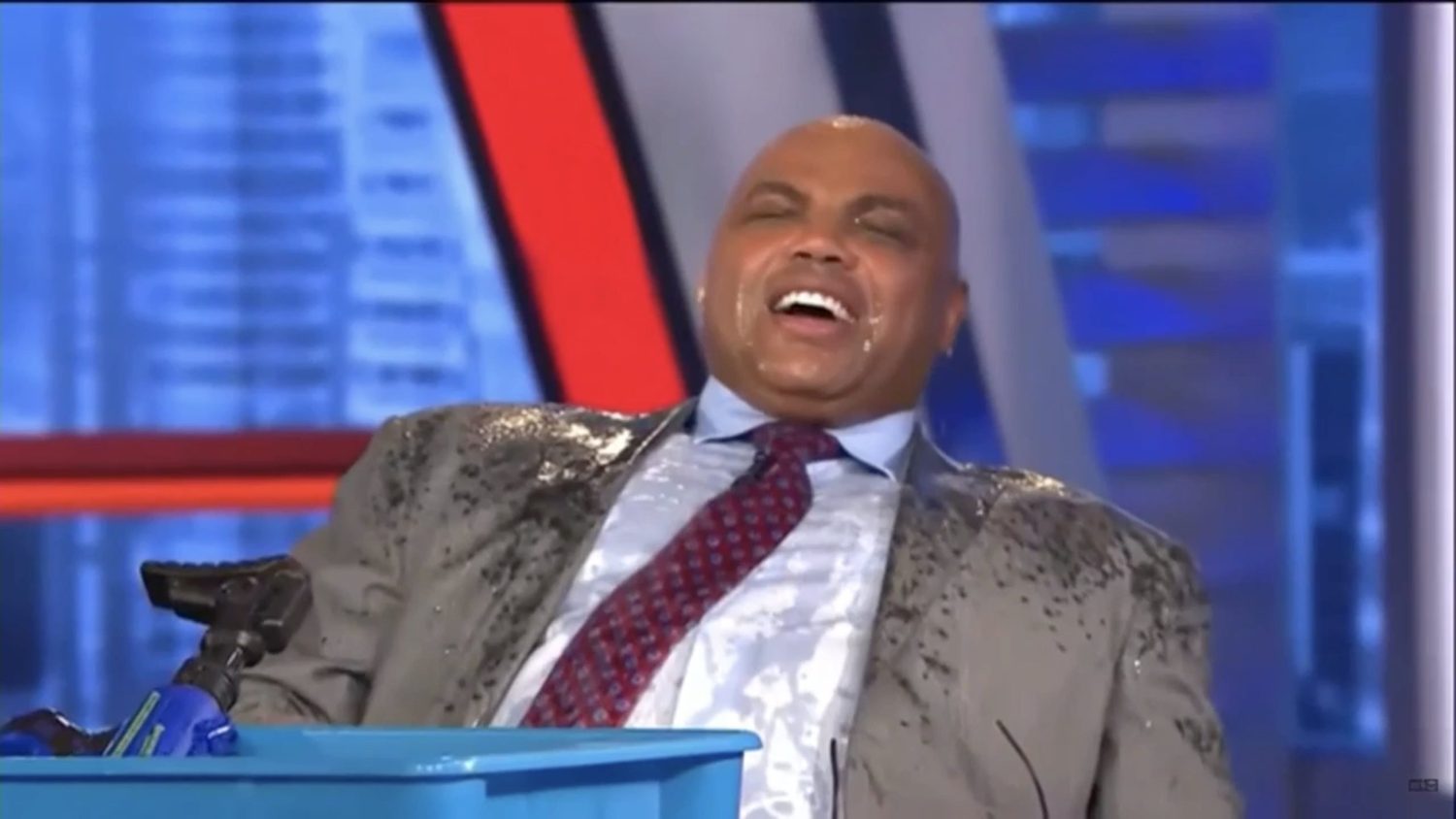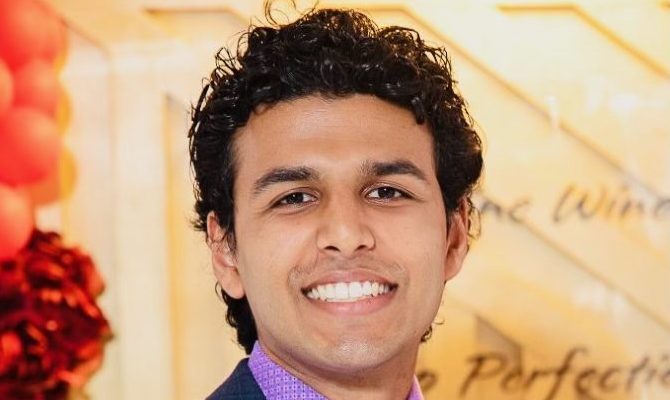PART FIVE: The enduring popularity of March Madness:
What makes a March Madness game so popular on broadcast?
Seth Davis: I always say in the midst of a tournament where everybody’s going nuts, “This is the greatest NCAA tournament since last year.” There’s so many games and many of them are quite forgettable. Over this period, you have 63 games, you’re going to get a half-dozen or so that are absolutely epic. That’s why, to me, the NCAA tournament is really as bulletproof as it gets. You have the Super Bowl, sometimes it’s a great game, sometimes it’s a clunker. But it’s only one game. The tournament is about as bankable of a sports product as there is out there.
Gary Parrish: It’s the one postseason sporting event that never lets you down. We sometimes have boring Super Bowls, MLB finals can be boring letdowns. The NCAA tournament is never boring. You never know where the story is going to come from. It’s Butler one year, it’s going to be Florida Gulf Coast the next year, going to be a buzzer-beater one year and it’s going to be a number one seed going down in the second round the next year. It creates these unbelievable stories.
Len Elmore: People are able to live the drama and emotion themselves. [It’s] going behind the scenes and giving people an opportunity to know who the players are, what makes them tick and what makes the program tick. Giving people a chance to identify with the participants and with the schools gives them something. It’s not cold reality like in the pros, where this is a professional corporation, and we represent a city, and this is what we do.
Tim Brando: I’ve been with Fox now for the last four years and I can honestly tell you that after I get through with calling regular season games and the ACC tournament, I still watch the NCAA Tournament just like a fan would watch it, and the reason I do that is because I’m totally entertained by it. I’m always curious to see how the broadcast teams deal with all the different storylines that are out there.
Jay Bilas: Whether they understand the game or not, people put a bracket together, and so it’s a competitive thing. Let’s not be naive, gambling is a big part of it. A lot of people like to gamble on it. What people gamble on tends to be important and popular.
So there are a lot of factors that have made it that way, but most people, they talk about buzzer beaters and stuff. But most people don’t watch the game that they are talking about. They watch the highlights of it and remember the highlights, but they didn’t actually watch the game, the ratings prove that. It’s just one of those things that captures a lot of people’s imagination, and it’s been a great event for a lot of years.
Michael DeCourcy: I think there’s still a chemistry to the NCAA tournament that is hard to fully explain. Part of is that it does go coast to coast. For instance, there’s a good chance that Vermont is in there this year. Really good chance that either UCLA or USC and Washington and Florida are in this year. So right there, you have basically touched every tip of the country. I think that’s an important part of why it works.
There’s some people who will argue that you should just get rid of automatic bids, and take the 64 power conference teams and maybe a few outliers that are obviously great like Cincinnati or Gonzaga or Wichita or whatever. I tell them, “Look, the tournament as it is, is worth almost $800 million a year and it lasts a few weeks. It’s an incredibly lucrative property.”
I know the smart people in college athletics like Jim Delany in the Big Ten, they know they aren’t topping that no matter what they do, so they know not to mess with it. Right now they have, from an administrative standpoint, they have the best of all worlds where they are, so the NCAA tournament remains a very valuable asset to the power conferences.
Jim Spanarkel: My estimation might be a little subjective: it’s because it is the best sporting event there is. Because of the three-and-a-half weeks and even before that, it starts to catch the attention of so many people across the country. Not only the teams, players or coaches, but it involves the university, the alumni, people that have casual or great interest in basketball; all the profile stories, in some form or fashion, start to catch people’s attention across the United States and beyond.
How does the NCAA tournament help make college basketball such a popular product?
Clark Kellogg: The tournament has become a big business, there is no denying that. CBS and Turner pay almost a billion dollars for the rights to the tournament, and that number will go up. It is clearly a huge business enterprise. The fact that the competition is between kids that are in schools, specifically, at institutions of higher learning has an appeal. I know there are a lot of cynics and skeptics out there. By and large, most of the kids that are playing are embracing being both students and athletes. That has a unique appeal to the public.
Another appeal is the brackets. People that may not even follow college basketball will get tied into the brackets. If a team from their particular city or their alma mater is in the tournament, it excites people. It becomes conversation and talk and wagering that creates all kinds of stuff around those brackets. Professional sports fans are fans, usually, of their respective team or players. In the world of the NCAA, because there are 68 different teams, you’ve got the whole alumni base from each of those schools that get excited about seeing their school colors in the bracket. That is pretty unique.
Bilas: The NCAA tournament is an incredibly popular event, it’s a wonderful event. Part of that is gambling, part of that is basketball. You know, the reason college basketball is popular is because it’s basketball. Basketball is the second most popular sport in the world. You know, they have a tournament in a lot of different sports and it doesn’t capture people’s imagination. But basketball does.
Football is a different animal, they don’t have a tournament, but basketball does and it’s always been great. It was great and compelling when it was 32, it was great when I played in it when it was 54, and 64, now its 68 and its still great and I don’t think that will change. But I think the underlying reason is basketball, more than anything.
Elmore: In the NBA, their playoff system is such that the best team more times than not, far more times than not, I would say nine out of 10 times, the best team is going to win because of the seven-game series. But I think in college basketball, you know, it’s the culmination of a long season. You’ve got the element of lesser players rising to the occasion for one game. You’ve got the favorites and, you know, more valued players who may wilt under pressure in that one game, so the drama is certainly there, and I think that is probably what is more important than anything. That’s what captures people’s imagination.
And remember, these are young people, these aren’t seasoned professionals. These are young guys, who 90% of them or more are going to go on to be professionals in some other field, as the NCAA likes to say. Another thing is now you can see every game with the collaboration of CBS and Turner. You can see every game on one of the various channels, and you can see the drama unfold.
The interviews above were conducted by students in an Advanced Sports Reporting class at Auburn University, under the direction of John Carvalho. The students who interviewed the media professionals were Lauren Youmans (Jay Bilas), Trevian Smith (Tim Brando), Will Thomas (Seth Davis), Daniel DuPoux (Michael DeCourcy), Keith Gambill (Len Elmore), Caroline Seeman (Clark Kellogg), Lauren Hooie (Gary Parrish), Hector Rios-Morales (Jim Spanarkel), and Ellie Falconer (Dick Vitale). Sara Palczewski and Adam Sparks ended up with contacts who were unavailable for a variety of reasons, so they contributed to the project in other ways.
Many thanks to the participating media pros, who graciously granted time during an incredibly busy time of year (in some cases with quick turnaround), in a variety of situations, including one who called his student from a rental car mid-road trip after his flight was canceled.
The students and Dr. Carvalho would like to thank Awful Announcing for displaying their work.
PART ONE: Playing memories and first games
PART TWO: All about upsets
PART THREE: Specific standout moments and teams
PART FOUR: Changes in coverage and the one-and-done rule
PART FIVE: The enduring popularity of March Madness






